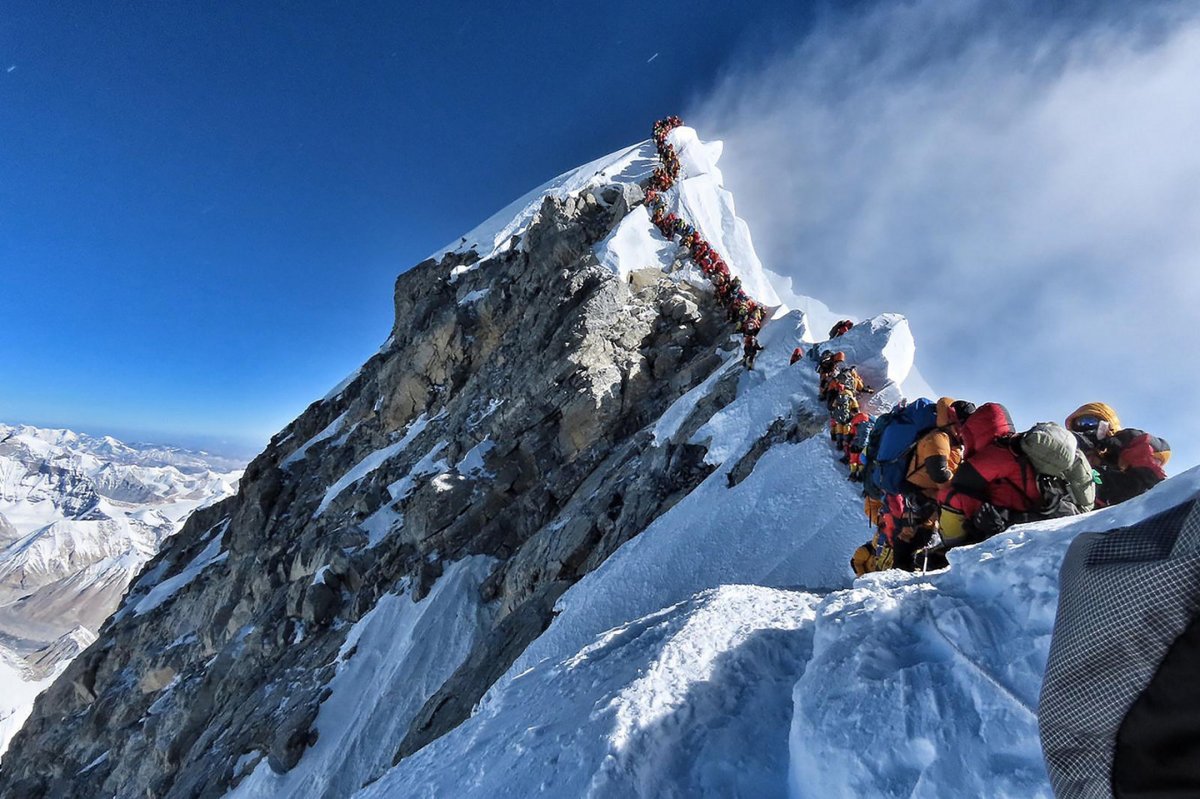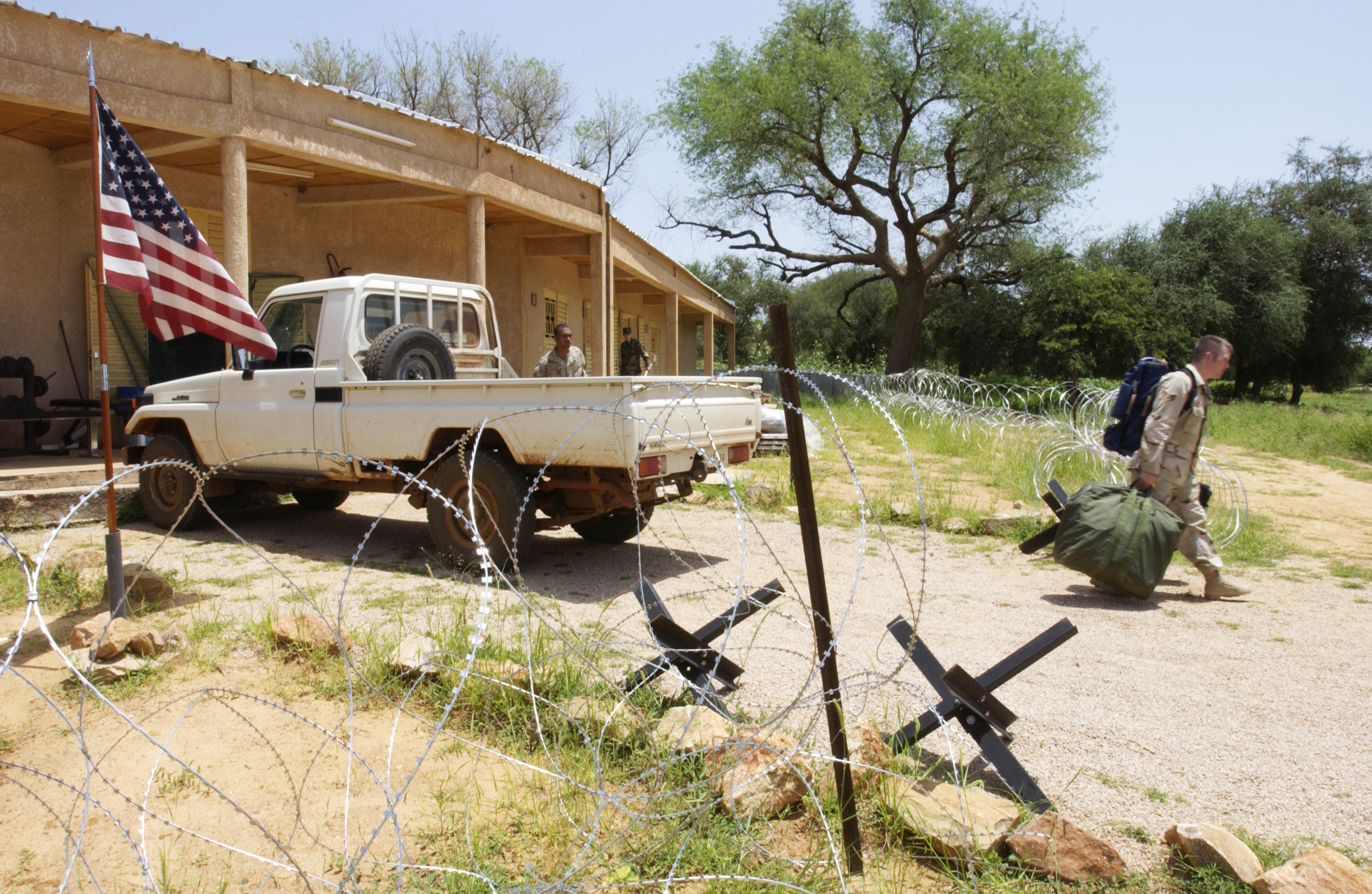Permafrost thawing on the Himalayan Qinghai-Tibet Plateau has occurred at twice the global average rate in recent decades, seriously threatening the stability of the local infrastructure.
According to research published in the journal Communications Earth & Environment, this thawing of the permafrost will result in an increased need for infrastructure repair and replacement, with 38 percent of roads, 39 percent of railways and power lines, and 21 percent of buildings being threatened by permafrost thaw by 2050.
The Qinghai-Tibet Plateau is a 970,000 square mile area around five times the size of mainland France, stretching from Western China to Pakistan, that includes areas of Nepal, India, eastern Tajikistan and southern Kyrgyzstan.
"Permafrost is 'permanently frozen soil.' We have a lot of it where it is cold: close to the poles and in mountainous regions," Mathieu Morlighem, an earth sciences professor at Dartmouth University, told Newsweek.

It is thought that with the effects of climate change increasing global temperatures, permafrost around the globe is beginning to thaw out at a rapid rate.
"A major concern is that permafrost has become unstable and is thawing nearly everywhere in response to the rapidly warming climate, which is rising at more than 3-times the global average warming rate across high northern latitudes," John S. Kimball, a systems ecologist at the University of Montana, told Newsweek.
"When permafrost thaws, the ground becomes unstable. It is much easier for that soil to move. A lot of places experience subsidence, opening up roads, affecting airports, train tracks, oil pipelines, or even buildings," Morlighem said.
There is a range of negative impacts from permafrost thaw, Kimball said. At local scales, permafrost thaw can lead to unstable or shifting ground that can damage building foundations, roads, pipelines and other infrastructure. The amount of ground movement from permafrost thaw, and thus the potential damage, is generally greater where there's more ground ice available to melt.
"In some areas, permafrost thaw can destabilize soils to the point of mass failure leading to landslides. These landslides can be severe, damaging buildings and other infrastructure, but also flushing large amounts of soil material and other debris into adjacent waterways, degrading water quality," said Kimball.
"Permafrost exposed by the initial landslide event will then thaw at an even greater rate, leading to even more and larger landslides and further soil loss. The landslides can be especially hazardous in mountain landscapes due to the greater terrain relief and steeper slopes."
At regional scales, however, permafrost thawing across the Arctic is contributing to the widespread drying of lakes and other water bodies.
"In the boreal Arctic, permafrost provides an effective barrier to surface soil drainage. This helps sustain an abundance of lakes and wetlands that provide critical habitats for wildlife, water supplies for municipal and industrial activities, and water networks for transportation and recreation," Kimball said.
"However, in the later stages of permafrost thaw, soil drainage can reach a point where lakes drain rapidly, leading to surface drying. Observations from satellites and ground observations indicate that the surface drying trend is extensive across the northern hemisphere permafrost zone, including the Qinghai-Tibet Plateau."
On the Qinghai-Tibet Plateau, in particular, freshwater alpine lakes and glacial and permafrost melt feed the three longest rivers in Asia and are a major water source for about 20 percent of the world's population. The moisture available from alpine lakes and streams also helps to sustain a fragile semi-arid grassland ecosystem. As glaciers and permafrost continue to melt, the lakes, rivers and other water bodies across the Plateau will begin drying out.
"The drier landscape and atmosphere degrades the grassland productivity and contributes to soil erosion that may lead to desertification. Desertification may promote less rainfall and snowfall, causing even further reductions in water supplies," Kimball said.

On a more global scale, thawing permafrost actually feeds back into the warming of the climate, further worsening thaw in other areas of the world.
"For the entire northern region, we expect between 50-230 billion tons of carbon to be released to the atmosphere as the climate warms," Ted Schuur, a professor of ecosystem ecology at Northern Arizona University, told Newsweek.
"The exact amount depends on whether society reduces human emission or not, with the lower values corresponding to a world where overall warming is kept below 2 degrees C."
The positive feedback cycle of warming and permafrost thaw may also include wildfires, which research has found to be increasing in Arctic permafrost soils.
"Arctic warming is driving an increase in wildfires in permafrost soils located above the Arctic Circle. This raises serious concerns as wildfires exacerbate the degradation of permafrost and the release of the greenhouse gasses that contribute to more warming and wildfires In the Arctic,"Adrià Descals, a climate researcher at The Center for Research on Ecology and Forestry Application, told Newsweek.
Uncommon Knowledge
Newsweek is committed to challenging conventional wisdom and finding connections in the search for common ground.
Newsweek is committed to challenging conventional wisdom and finding connections in the search for common ground.
About the writer
Jess Thomson is a Newsweek Science Reporter based in London UK. Her focus is reporting on science, technology and healthcare. ... Read more
To read how Newsweek uses AI as a newsroom tool, Click here.








